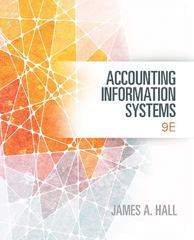Question
LIFO Perpetual Inventory The beginning inventory of merchandise at Keats Office Supplies and data on purchases and sales for a three-month period are as follows:
| LIFO Perpetual Inventory The beginning inventory of merchandise at Keats Office Supplies and data on purchases and sales for a three-month period are as follows:
Required: 1. Record the inventory, purchases, and cost of merchandise sold data in a perpetual inventory record similar to the one illustrated in Exhibit 4, using the last-in, first-out method. If units are in inventory at two different costs, enter the OLDEST units first.
2. Determine the total sales, the total cost of merchandise sold, and the gross profit from sales for the period.
3. Determine the ending inventory cost as of May 31, 2014. $ |
Hide Feedback
Partially Correct
Check My Work Feedback
1. When the perpetual inventory system is used, revenue is recorded each time a sale is made along with an entry to record the cost of the merchandise sold. LIFO means the last units purchased are assumed to be the first to be sold. Therefore after each sale, the remaining or ending inventory is made up of the first or earliest purchases. Think of your inventory in terms of "layers." The first sale comes from the most recent purchase layer. When deciding which layer to use for costing of each sale ask yourself: "Is there enough inventory left in the most recent purchase to cover the sale?" If not, the other units sold should be taken from the second most recent purchase layer, which then contains the most recent costs. Continue this process for each transaction. If you have done this problem correctly, the remaining units making up ending inventory will be the March 3 beginning inventory and May 21 unit purchase price.
2. Total sales are obtained by taking the number of units sold times their sale prices for all sales and adding these amounts together. The total cost of merchandise sold can be obtained by adding the LIFO costs in the perpetual inventory record. Sales minus cost of merchandise sold equals gross profit.
3. The ending inventory is what is left after subtracting the cost of goods sold from the goods available for sale. Multiply the units remaining after the last sale by their corresponding earliest layer cost to determine the LIFO cost of the ending inventory.
Learning Objective 2, Learning Objective 3.
Step by Step Solution
There are 3 Steps involved in it
Step: 1

Get Instant Access to Expert-Tailored Solutions
See step-by-step solutions with expert insights and AI powered tools for academic success
Step: 2

Step: 3

Ace Your Homework with AI
Get the answers you need in no time with our AI-driven, step-by-step assistance
Get Started


